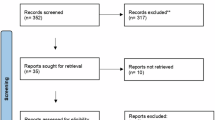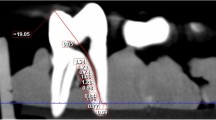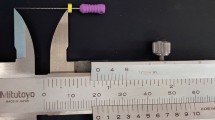Abstract
Data sources
PubMed, LILACS, Science Direct, Cochrane Collaboration, NHS Evidence databases and in Evidence Based Dentistry and Journal of Evidence-Based Dental Practice.
Study selection
Randomised controlled trials (RCTs), clinical trials (CTs), diagnostic comparative studies and evaluation studies undertaken in adults where working length determination by both electronic and radiographic methods were used were considered.
Data extraction and synthesis
Two reviewers independently assessed study quality.
Results
Twenty-one studies were included, five RCTs and 16 in vivo diagnostic test studies. There was considerable heterogeneity between the EALs used and the study designs and a narrative summary of the findings were presented. Working length measurement was compared using three different methods: distance to the radiographic apex in teeth undergoing root canal treatment, (11 studies); concordance between the comparative measurements with EAL and radiography, (two studies); distance to specific anatomic apical reference points evaluated after tooth extraction (four studies)ded. The body of evidence was once again assessed as of low quality.
Conclusions
Within the limitations of this review, it is suggested that working length determination by using EAL may perform better than radiography alone.
Similar content being viewed by others
Log in or create a free account to read this content
Gain free access to this article, as well as selected content from this journal and more on nature.com
or
References
Schaeffer MA, White RR, Walton RA . Determining the optimal obturation length: a meta-analysis of literature. J Endod 2005; 31: 271–274.
Gordon MP, Chandler NP . Electronic apex locators. Int Endod J 2004; 37: 425–437.
Author information
Authors and Affiliations
Additional information
Address for correspondence: Dr Jorge N. R. Martins, Instituto de Implantologia of Lisbon, Av. Columbano Bordalo Pinheiro, 50 – 5 e 6, 1070-064 Lisboa, Portugal. E-mail: jnr_martins@yahoo.com.br
Martins JN, Marques D, Mata A, Caramês J. Clinical efficacy of electronic apex locators: systematic review. J Endod 2014; 40: 759–777.
Rights and permissions
About this article
Cite this article
Mello, I. Use of electronic apex locators may improve determination of working length. Evid Based Dent 15, 120 (2014). https://doi.org/10.1038/sj.ebd.6401066
Published:
Issue date:
DOI: https://doi.org/10.1038/sj.ebd.6401066



